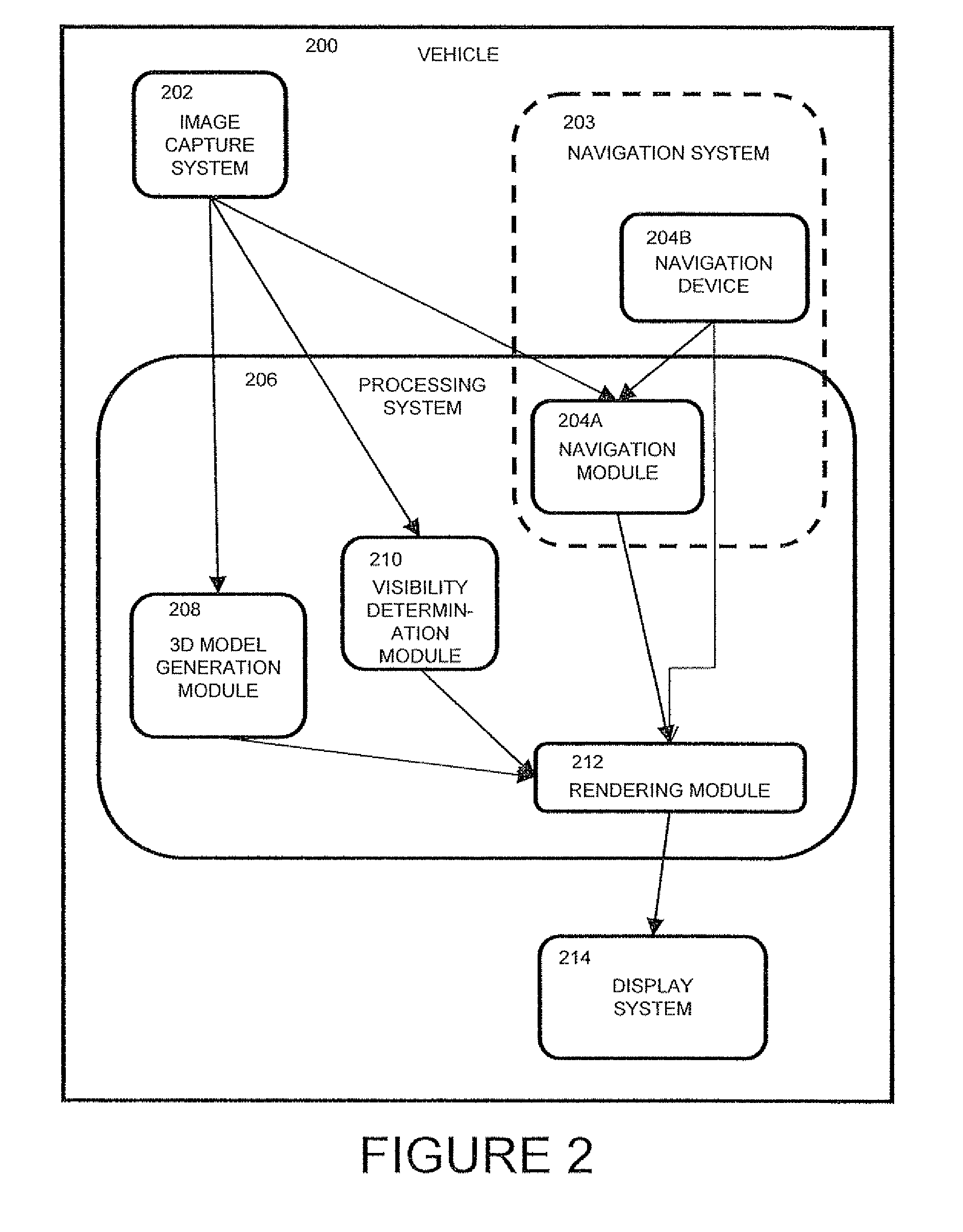Assisting vehicle navigation in situations of possible obscured view
a technology of assisting vehicle navigation and obscured view, which is applied in the field of image processing, can solve problems such as difficulty in the landing process, dust landing effect, and small particles on the ground to become airborn
- Summary
- Abstract
- Description
- Claims
- Application Information
AI Technical Summary
Benefits of technology
Problems solved by technology
Method used
Image
Examples
Embodiment Construction
[0032]The principles and operation of this system and method according to the present embodiment may be better understood with reference to the drawings and the accompanying description. The present invention is a system and method for assisting navigation of a vehicle in circumstances where there is a possibility of the view being obscured. The following is a non-limiting description of the circumstances where this system and method are used.
[0033]Referring to FIG. 1A is a diagram of a vehicle approaching a landing zone. In the context of this document, the term vehicle is used to refer to a vertical takeoff and landing vehicle (VTOL), such as a helicopter, tilt-wing aircraft, or craft that operates similarly. The concept of this invention can also be applied to different platforms in similar situations, such as landing a submersible craft on an ocean floor. The vehicle 100 has a view of the landing zone 102 from a distance. During the approach of the vehicle to the landing zone, t...
PUM
 Login to View More
Login to View More Abstract
Description
Claims
Application Information
 Login to View More
Login to View More - R&D
- Intellectual Property
- Life Sciences
- Materials
- Tech Scout
- Unparalleled Data Quality
- Higher Quality Content
- 60% Fewer Hallucinations
Browse by: Latest US Patents, China's latest patents, Technical Efficacy Thesaurus, Application Domain, Technology Topic, Popular Technical Reports.
© 2025 PatSnap. All rights reserved.Legal|Privacy policy|Modern Slavery Act Transparency Statement|Sitemap|About US| Contact US: help@patsnap.com



